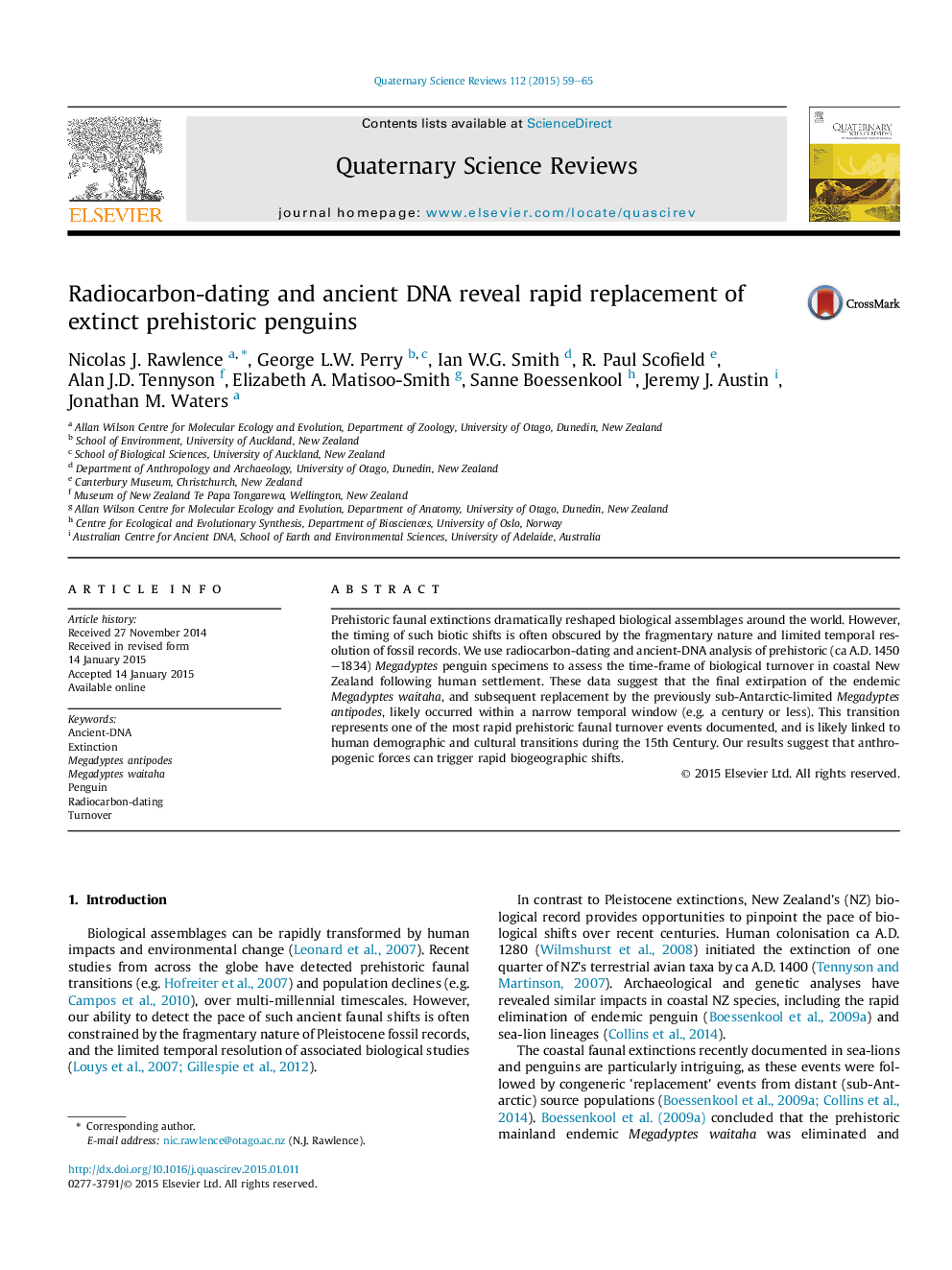| Article ID | Journal | Published Year | Pages | File Type |
|---|---|---|---|---|
| 6446391 | Quaternary Science Reviews | 2015 | 7 Pages |
Abstract
Prehistoric faunal extinctions dramatically reshaped biological assemblages around the world. However, the timing of such biotic shifts is often obscured by the fragmentary nature and limited temporal resolution of fossil records. We use radiocarbon-dating and ancient-DNA analysis of prehistoric (ca A.D. 1450-1834) Megadyptes penguin specimens to assess the time-frame of biological turnover in coastal New Zealand following human settlement. These data suggest that the final extirpation of the endemic Megadyptes waitaha, and subsequent replacement by the previously sub-Antarctic-limited Megadyptes antipodes, likely occurred within a narrow temporal window (e.g. a century or less). This transition represents one of the most rapid prehistoric faunal turnover events documented, and is likely linked to human demographic and cultural transitions during the 15th Century. Our results suggest that anthropogenic forces can trigger rapid biogeographic shifts.
Related Topics
Physical Sciences and Engineering
Earth and Planetary Sciences
Geology
Authors
Nicolas J. Rawlence, George L.W. Perry, Ian W.G. Smith, R. Paul Scofield, Alan J.D. Tennyson, Elizabeth A. Matisoo-Smith, Sanne Boessenkool, Jeremy J. Austin, Jonathan M. Waters,
